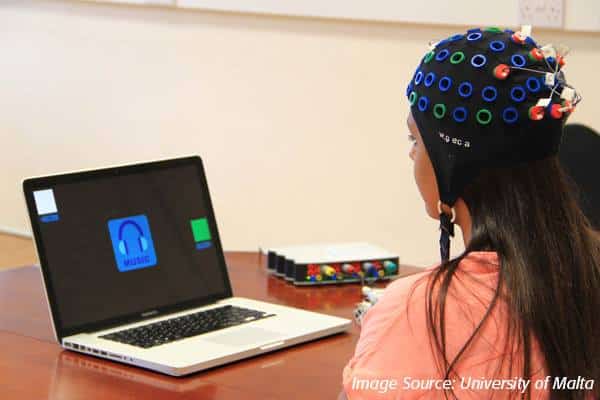Over the past few years, it has been demonstrated that brain waves can be vividly understood and processed by a computer. Building on that, researchers at the University of Malta are now exploring the use of brain waves to control a music player.
This is how it works: researchers use a special EEG system that is able to read steady state visually evoked potentials, or SSVEPS. SSVEPS are the signals released by our brain to different external stimuli. For instance, if you are looking at a screen which contains a green button and you wish to press the button, a specific electric signal will be generated by your brain.
Researchers believe that by correctly processing these signals, they can essentially allow a person to control a music player simply by thinking about it. During the research, human volunteers are asked to sit in front of a computer screen which contains a number of squares, or buttons. Each of these squares flashes in a different color and at a unique frequency.
When the human volunteer wishes to press a specific button, he or she focuses on it. The specific frequency of that button invokes a unique electrical signal in the brain and once the signal is processed, that button is automatically pressed. While the research is still in its initial stages, it can be very helpful for people with physical disabilities.
By basing computer-driven tasks on thoughts alone, researchers can essentially allow physically disabled persons to perform countless tasks on their own. However, before such technology becomes mainstream, it will have to go through numerous refinements and reach the point where it becomes viable from a consumer view point.
Courtesy: Ubergizmo
[ttjad keyword=”blackberry”]




